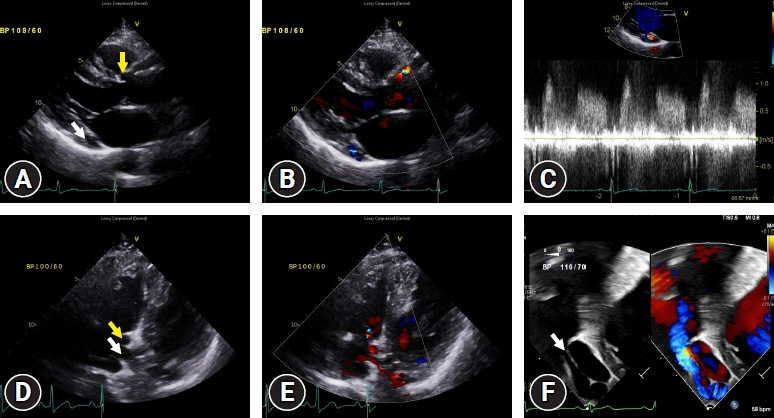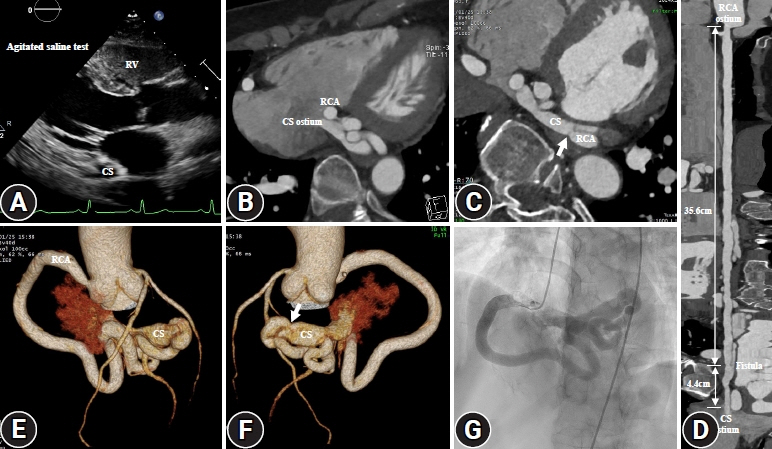J Yeungnam Med Sci.
2023 Oct;40(4):461-465. 10.12701/jyms.2023.00906.
Differential diagnosis for unusually dilated coronary sinus and right coronary artery incidentally found on echocardiography
- Affiliations
-
- 1Division of Cardiology, Department of Internal Medicine, Yeungnam University College of Medicine, Daegu, Korea
- 2Division of Physiology, Department of Biomedical Laboratory, Daegu Health College, Daegu, Korea
- KMID: 2547375
- DOI: http://doi.org/10.12701/jyms.2023.00906
Figure
Reference
-
References
1. Humbert M, Kovacs G, Hoeper MM, Badagliacca R, Berger RMF, Brida M, et al. 2022 ESC/ERS Guidelines for the diagnosis and treatment of pulmonary hypertension. Eur Heart J. 2022; 43:3618–731.
Article2. Goyal SK, Punnam SR, Verma G, Ruberg FL. Persistent left superior vena cava: a case report and review of literature. Cardiovasc Ultrasound. 2008; 6:50.
Article3. Abdel Razek AA, Al-Marsafawy H, Elmansy M, El-Latif MA, Sobh D. Computed tomography angiography and magnetic resonance angiography of congenital anomalies of pulmonary veins. J Comput Assist Tomogr. 2019; 43:399–405.
Article4. Kawsara A, Núñez Gil IJ, Alqahtani F, Moreland J, Rihal CS, Alkhouli M. Management of coronary artery aneurysms. JACC Cardiovasc Interv. 2018; 11:1211–23.5. Pham V, Hemptinne Q, Grinda JM, Duboc D, Varenne O, Picard F. Giant coronary aneurysms, from diagnosis to treatment: a literature review. Arch Cardiovasc Dis. 2020; 113:59–69.
Article6. Abou Sherif S, Ozden Tok O, Taşköylü Ö, Goktekin O, Kilic ID. Coronary artery aneurysms: a review of the epidemiology, pathophysiology, diagnosis, and treatment. Front Cardiovasc Med. 2017; 4:24.
Article7. Gordon JB, Kahn AM, Burns JC. When children with Kawasaki disease grow up: myocardial and vascular complications in adulthood. J Am Coll Cardiol. 2009; 54:1911–20.8. Thangathurai J, Kalashnikova M, Takahashi M, Shinbane JS. Coronary artery aneurysm in Kawasaki disease: coronary CT angiography through the lens of pathophysiology and differential diagnosis. Radiol Cardiothorac Imaging. 2021; 3:e200550.
Article9. Al-Hijji M, El Sabbagh A, El Hajj S, AlKhouli M, El Sabawi B, Cabalka A, et al. Coronary artery fistulas: indications, techniques, outcomes, and complications of transcatheter fistula closure. JACC Cardiovasc Interv. 2021; 14:1393–406.
- Full Text Links
- Actions
-
Cited
- CITED
-
- Close
- Share
- Similar articles
-
- A Rare Combination of the Left Circumflex Coronary Artery Fistula Connecting a Dilated Coronary Sinus with Persistent Left Superior Vena Cava and Multiple Arteriovenous Fistulae
- Two Cases of Anomalous Origin of Coronary Artery
- A Case of Double Right Coronary Artery with Arteriovenous Fisula
- Direct Visualization of Coronary Artery and Flow using Transthoracic Doppler Echocardiography
- Anomalous Origin of the Left Circumflex Coronary Artery: A Report of 2 Cases and Echocardiographic Features



